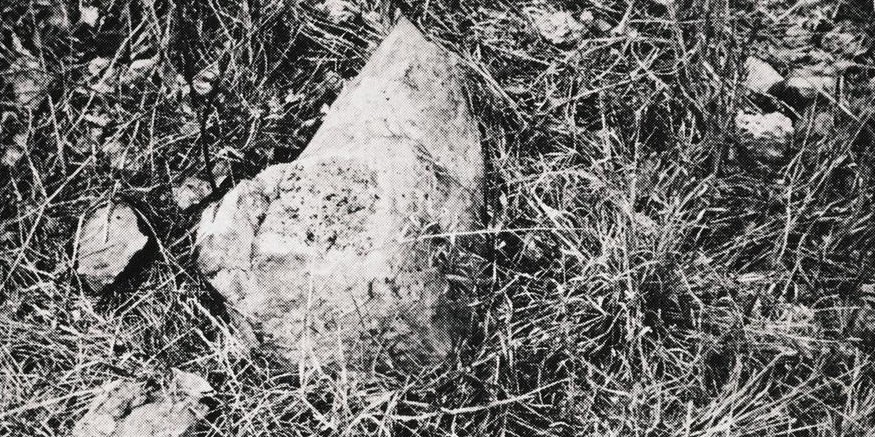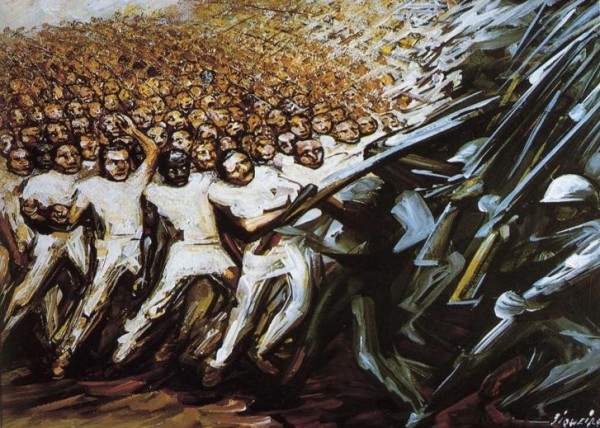Theaster Gates’ Social Formations

As artist and urbanist, Theaster Gates is his own patron, his own institution, his own LLC. He is start-up and content creator combined. Though artists have long engaged in corporate parodies, Gates goes beyond the twee anarcho-entrepreneurship of the Bernadette Corporation or the politicized media takeovers of the Yes Men. He creates new art spaces as anchor institutions in blighted blocks. His works propel white creative types to penetrate black areas of the city formerly unknown to them. His renown encourages art tourists to travel beyond the usual downtown museum circuit. But Gates does not draw attention with mural paintings or large public sculptures. Gates’ artwork is, simply, real estate. And there is real money at stake.
From a Rooseveltian Dream to the Nightmare of Parliamentary Coup

In Brazil, the first decade of the twenty-first century was characterized by a successful but moderate reformist program spearheaded by its president from 2003-2010, Luiz Inácio Lula da Silva, universally known as Lula. His successor hoped to accelerate the project on the wings of a Rooseveltian dream: to create “in just the space of a few years” a country in which the majority could lead “recognizably similar and remarkably decent material lives.” What happened?
Class Struggle in Brazil: The Neoliberal Coup, an Attack on Workers and the Poor

The neoliberal program includes: a) the drastic reduction of the federal budget, with a direct impact on social welfare, education, public health, and research spending, a.k.a. “the death budget”; b) labor legislation reform, removing or weakening many of the longstanding protections enjoyed by Brazilian workers and, under the guise of creating “flexible” labor relations, undermining the country’s trade-union movement; and c) social security reform, imposing stricter and longer work requirements, which, given the current and past employment structure would make full retirement unattainable for large sectors of Brazil’s working class.
Defamiliarization and the Unprompted (Not Innocent) Eye

The aim is to revive the concept of defamiliarization by showing that it has nothing to do with the Innocent Eye and to propose a new interpretation of it in terms of distributed attention. This reinterpreted concept of defamiliarization can be useful for contemporary post-formalist accounts of the history of vision, imagination, and visual attention.
Populism or Capitalist De-modernization at the Semi-periphery: The Case of Poland

There is, finally, one more reason why only a unified front of Old and New Left may be successful in countering both neoliberalism and populism within parliamentary politics. An important—I’d say even the largest—part of progressive political mobilization is nowadays done by women. At least that is the situation in Poland. It is obvious that women would not give up women’s causes and fight just for redistribution under the banners of the Old Left. We do not need, however, to treat this as a limitation or predicament. As a matter of fact, the women’s struggle is undoubtedly the biggest and the most important single positive factor in contemporary Polish politics, a fact that was very well epitomized in autumn 2016 by the so called Black March and women’s strike in opposition to the possibility of further restrictions on a Polish abortion law that is already one of the most restrictive in the EU.
Issue #24: The Neoliberal Coup

Inside the issue You May Also Like Issue #20: Political and Aesthetic Post-Mortem
Two Poems

In the office park he spoke of the land.
To the loan officer, of the land.
At the temp agency, the land.
Issue #23: Naturalizing Class Relations

In this issue we address the various ways in which class has been naturalized by popular political alternatives. As Warren, Reed, Legette, and Michaels argue, there is a class politics to antiracism, which has been mostly expunged from public debate. Grasso considers the rehabilitative ideology of the prison system, Sowa the stakes of the new populism. Finally, Cronan and Palermo look at a current variant of neoliberalism in art history.
Tain’t So

To lay out, as clearly and as programmatically as we could, the reasons why despite protestations to the contrary, antiracism, understood as insisting on the symmetry of fighting discrimination and fighting exploitation, suppresses the development of a working class politics rather than offering a road to it. To make this point, the essays printed here, perhaps a little more insistently than our previous responses to critics, attend to the way that antiracism is an expression of the class position of those of us who produce the bulk of the commentary on injustice, and who routinely confront race and gender disparities in our everyday lives.
Black Politics After 2016

Largely because of the challenge posed by the alternative political vision that Sanders advanced and the subsequent struggle over how to interpret the meanings of Trump’s victory, the 2016 election and its aftermath have thrown into relief the extent to which antiracism, and other formulations of politics based on ascriptive identities, are not simply alternatives to a (working) class politics, as Clinton’s cheesy put-down during the campaign implied. What is typically called identity politics reflects the perspective of a different class, the professional and managerial strata who are relatively insulated from the negative impacts of the four decades long regime of regressive redistribution and better positioned to take advantage of the opportunity structures it opens. That perspective suggests a reason many high-profile antiracists have become so vehement in their opposition to a politics centered on downward economic redistribution.
